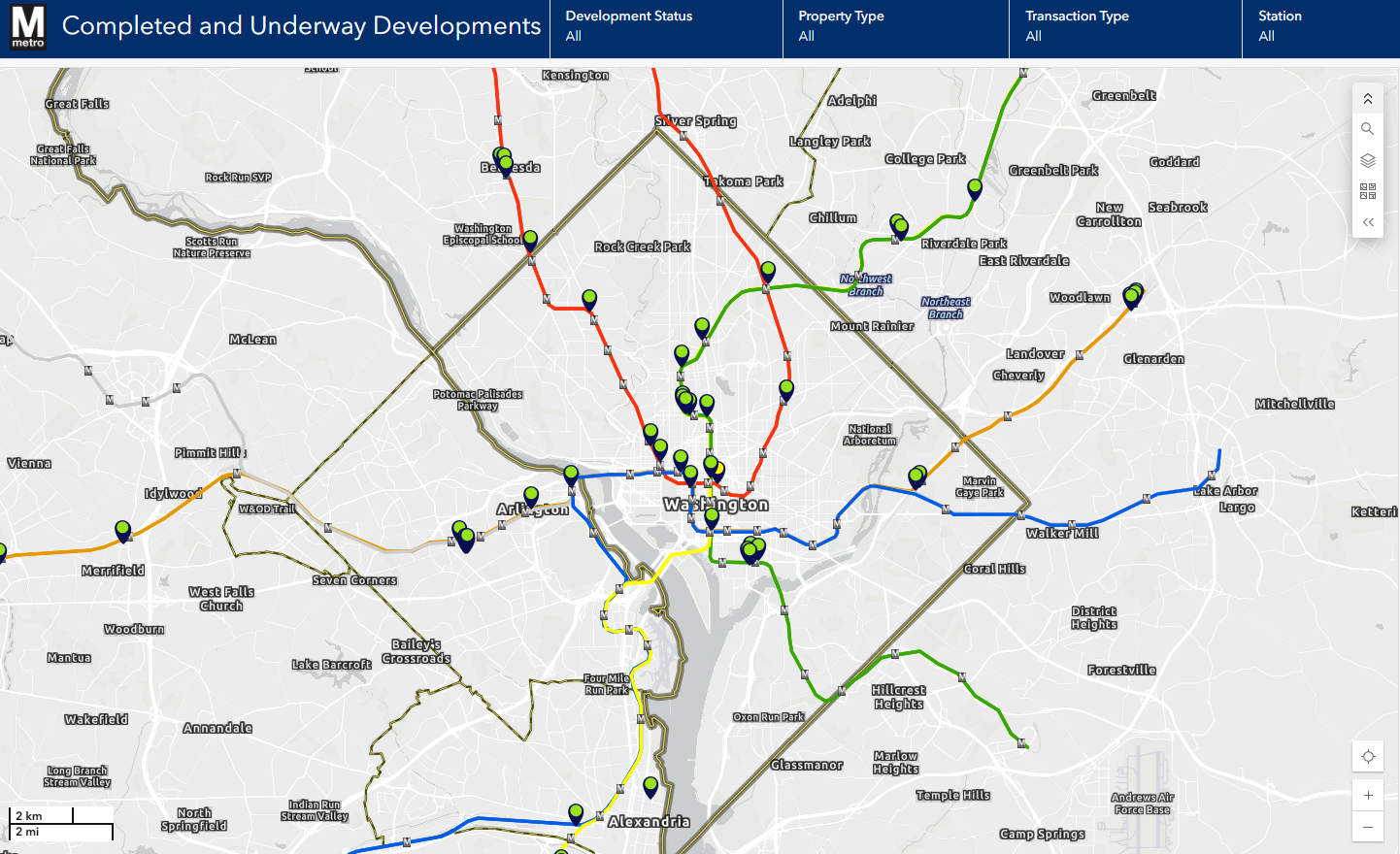Metro celebrates three years of joint development project successes
Metro is pleased to announce a new progress report highlighting three years of success for Metro’s joint development real estate program. The program has delivered eight projects in three years totaling 1,490 residential units (813 affordable) and 1 million square feet of office space, resulting in $15 million in new annual tax revenue for local jurisdictions according to a new progress report on Metro’s 10-Year Strategic Plan.
Metro’s joint development program collaborates with developers to build housing, offices, and other amenities on Metro property. It is a form of transit-oriented development that generates new Metro ridership and revenue and adds new housing, jobs, and tax revenue to the region.
Five new developments, either under construction or expected to break ground in 2025, will add another 1,270 residential units and 422,000 square feet of office, generating $22 million in new annual tax revenue.

“Metro has completed more joint development projects than any other transit system in the nation, and we’re not slowing down,” said Metro General Manager and CEO Randy Clarke. “Over the last three years, the Metro team has developed and implemented strategies to accelerate joint development because we know the value that it brings to the region’s economy, residents, and the Metro system.”
Metro is nearly halfway towards achieving its goal of 20 additional joint development agreements by 2032. Since 2022, Metro’s Board has approved five new joint development agreements, and staff are in negotiations on four additional agreements. To achieve this milestone, Metro has updated transaction templates, streamlined processes, and retained external real estate advisors and counsel, with a goal to complete future negotiations in six to nine months.
Metro recently executed an amended Joint Development Agreement for Takoma with  EYA for a 434-unit residential building with 17,000 square feet of retail and a 1.8-acre park, and a Joint Development Agreement for Twinbrook with Hines will be executed this month. The Twinbrook joint development includes a 437-unit residential building with 5,000 square feet of retail. Both projects are expected to break ground in 2027.
EYA for a 434-unit residential building with 17,000 square feet of retail and a 1.8-acre park, and a Joint Development Agreement for Twinbrook with Hines will be executed this month. The Twinbrook joint development includes a 437-unit residential building with 5,000 square feet of retail. Both projects are expected to break ground in 2027.
In 2024, Metro released four solicitations, much higher than the previous ten years. From these solicitations, Metro selected developers for two stations, and a third is expected this fall.
Metro’s site planning and solicitation process reduces risk and increases site marketability through right-sizing transit facilities, controlling the cost of replacement assets, and utilizing updated solicitation templates. Metro also works with jurisdictional partners to address financial feasibility challenges, with $187 million state, local & federal investment allocated to Metro sites in the past three years.
Metro’s 2025 Progress Report identifies 29 million square feet of remaining development potential across 41 stations, with the potential to generate an additional $300 million in new annual tax revenue. Metro’s station prioritization groupings help Metro staff manage internal resources, and local jurisdictions understand and proactively address challenges to development.
Since 1975, Metro’s 59 projects have created 10,800 residential units, 5.7 million square feet of office development, and 1.3 million square feet of retail development across 32 stations, generating $220 million in annual tax revenue.
To give Metro’s stakeholders and the public increased visibility into the joint development program, Metro is launching a new Joint Development Tracker that shows all completed projects, their fiscal impact, and future development sites.

The entire 2025 Progress Report and associated Work Plan (detailing completed, near-term, and mid-term actions for each station) can be found at wmata.com/jointdevelopment. Future progress reports will continue to supplement annual reporting via Metro’s Strategic Transformation Plan Regional Opportunity and Partnership Goal.